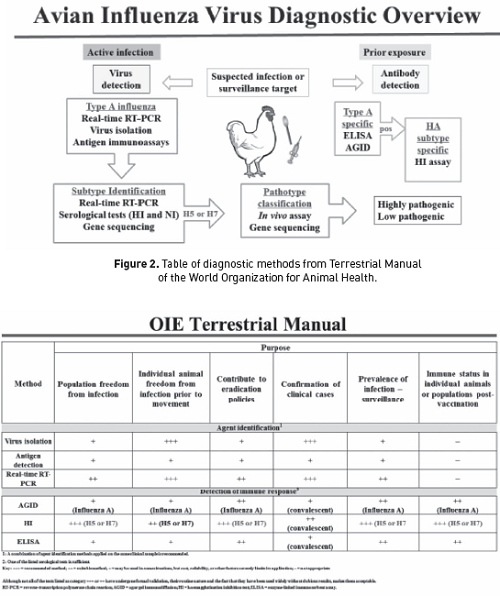



Avian Influenza Surveillance and Diagnosis
Rapid detection and accurate identification of low (LPAI) and high pathogenicity avian influenza (HPAI) is critical to controlling infections and disease in poultry.Test selection and algorithms for the detection and diagnosis of avian influenza virus (AIV) in poultry may vary somewhat among different countries and industry compartments depending on specific needs and resources (Figures 1 and 2).
Importantly, since HPAI and H5 and H7 low pathogenicity (LP) AI are reportable to World Organization for Animal Health (OIE), diagnostic procedures implemented for regulatory purposes should be fit for purpose, and ideally standardized or harmonized when used across a region or network.
There are several serologic and molecular testing options available that have been well validated and used extensively; routine evaluation of both serologic and molecular assays ensures ability to detect new strains as viruses evolve. While there is currently no new technology that will completely replace the utility and economy of current tests, assays may require modifications or updates and /or addition of different tests. Current AIV diagnostics may benefit from improvements such as addition of internal positive controls for molecular assays, better subtype discrimination (molecular and serologic), and rapid pathotype determination.
Figure 1. Diagnostic and surveillance algorithm.

David E. SWAYNE
U.S. Department of Agriculture (USDA), Athens, Georgia, USA
_________________________________
Information from the Avian Flu Forum hosted by Boehringer on April 2017








